EXECUTIVE SUMMARY
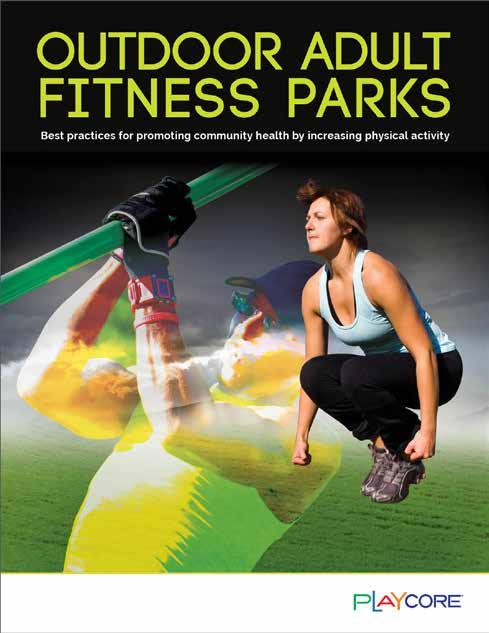
Best practices for promoting community health by increasing physical activity

Explore the guide to learn:
• History and benefits of outdoor fitness parks
• Aligning equipment to total body fitness
• Selecting an appropriate environment, design considerations, and standards
• Marketing to user groups and diverse populations
• Maintenance and sustainability
• Programming to expand utilization
• Evaluating and reporting outcomes
• Ten best practice case study examples
Additional Resources include:
Professional development training module
The Outdoor Adult Fitness Parks National Demonstration Site program, national recognition and data collection opportunities for sites that follow the best practice design guidelines and establish outdoor adult fitness parks in their community.
The purpose of the Outdoor Adult Fitness Parks guidebook is to inspire communities to advocate for and utilize Outdoor Adult Fitness Parks as critical health solutions for increasing physical activity and social engagement. PlayCore, along with a variety of industry professionals, fitness experts, organizational advocates, and local champions across a variety of communities, offers an educational and design resource to help promote community health and capital through innovative outdoor fitness settings.



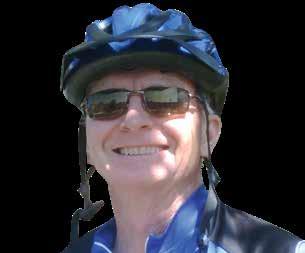 Michael Suk, M.D., J.D. Chairman of Orthopaedic Surgery, Geisinger Health System, Danville, PA
Gary Liguori, Ph.D. Dean of the College of Health and Sciences, University of Rhode Island
Thom McKenzie, Ph.D. Emeritus Professor of Exercise and Nutritional Sciences, San Diego State University
Partnership Advisory Network:
Michael Suk, M.D., J.D. Chairman of Orthopaedic Surgery, Geisinger Health System, Danville, PA
Gary Liguori, Ph.D. Dean of the College of Health and Sciences, University of Rhode Island
Thom McKenzie, Ph.D. Emeritus Professor of Exercise and Nutritional Sciences, San Diego State University
Partnership Advisory Network:
A Public Health Priority
A study on six National Demonstration Sites conducted by the University of Tennessee at Chattanooga demonstrated additional benefits. The purpose of this study was to examine the impact of outdoor adult fitness parks (OFPs) within local parks by:
• Comparing the number of people using OFP’s to the number who used comparable local parks without OFPs
• Comparing the physical activity level of park users in OFP and comparison parks
• Examine overall usage of OFPs in the OFP parks
• Examine intensity levels of exercise and user feedback
As a result, the research team discovered that there were over twice as many park users at the OFP parks relative to the comparison parks, and that the number of park users engaged in moderate to vigorous level activities there was 63%. Most importantly, the results show that maximum intensity levels can be achieved using either standard equipment found in an indoor fitness facility or outdoor fitness equipment for a variety of exercises. User reported data included, all users felt safe at the OFPs, and the majority used the equipment 15 minutes to one hour, daily to biweekly, to reduce stress and/or lose weight.
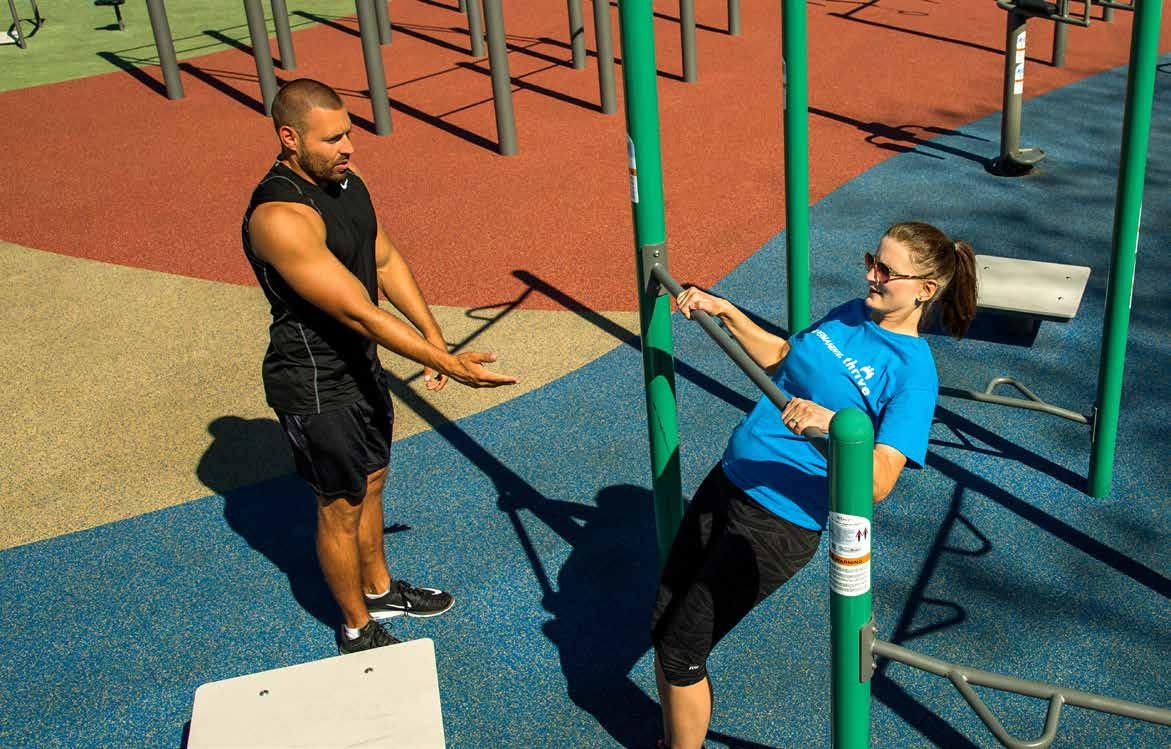

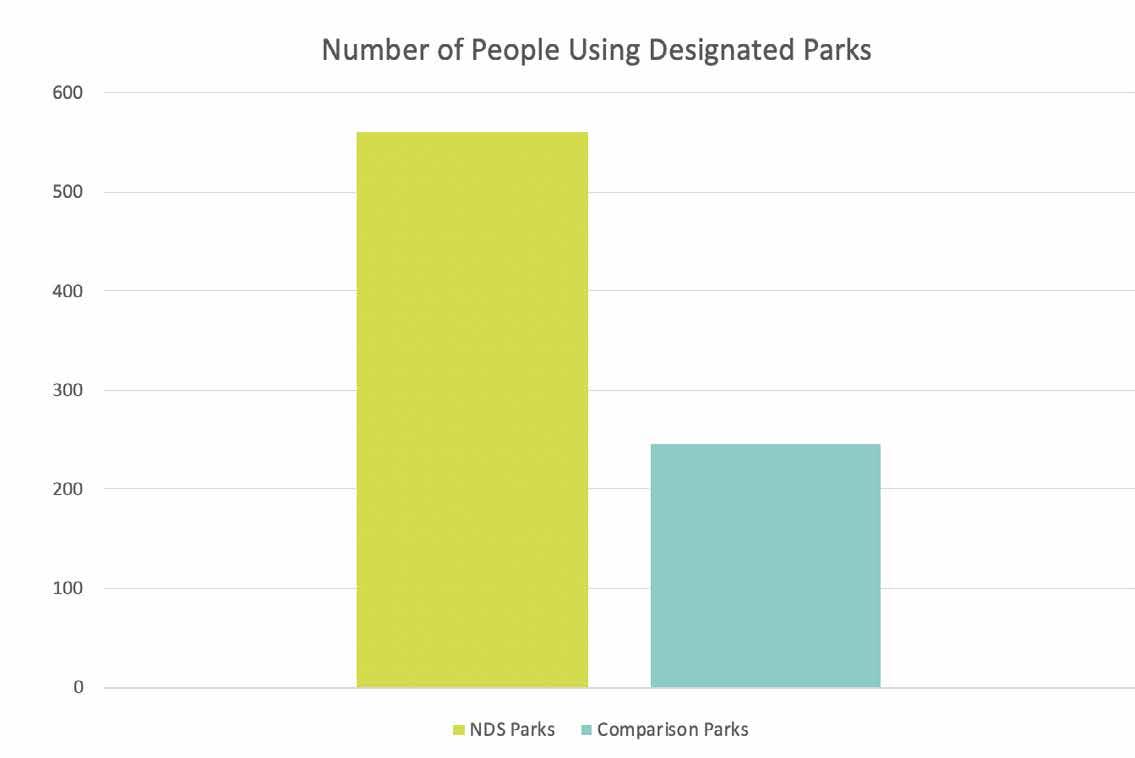
 There were over twice as many park users at the NDS parks relative to the comparison parks.
The number of park users engaged in physical activities at each intensity level were observed through SOPARC scans. Within the NDS parks, 63% of park users were performing physical activities at a moderate or vigorous intensity during the SOPARC scans.
There were over twice as many park users at the NDS parks relative to the comparison parks.
The number of park users engaged in physical activities at each intensity level were observed through SOPARC scans. Within the NDS parks, 63% of park users were performing physical activities at a moderate or vigorous intensity during the SOPARC scans.
Research
Public Health Priority
Research is proving that Outdoor Adult Fitness Parks are providing a variety of meaningful outcomes to communities including engaging participants in substantially more moderate to vigorous physical activity. Together we can effectively promote the benefits of parks and outdoor fitness spaces as critical health solutions, by reducing sedentary-related illnesses and removing the barriers to a life of fitness.
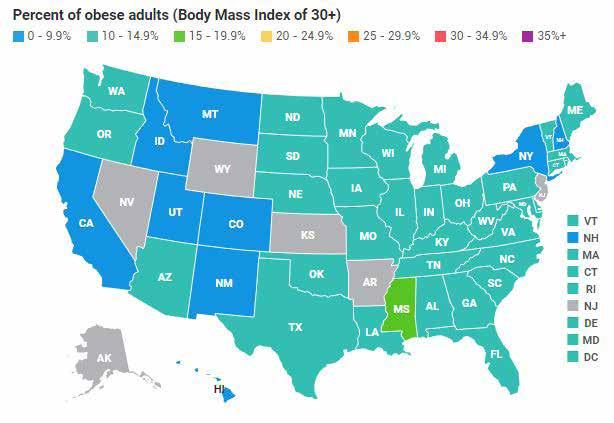
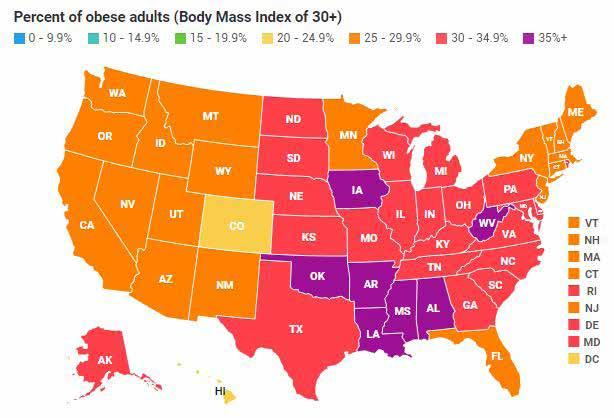
Benefits include:
• Free to users, providing needed resources especially in underserved communities
• People who exercise outdoors are more likely to repeat the behavior
• People who exercise outdoors are more likely to engage in the activity longer than those who exercise indoors
• Provides a social outlet for exercise
• Can be enjoyed by people of all abilities and fitness levels
• Provides exposure to fresh air, nature, and sunlight, which increases important levels of vitamin D
• May encourage a greater number of people to exercise regularly than indoor options
• Offers Outdoor Adult Fitness Park owners an outlet for revenue generation through program agreements with certified personal trainers
• Acts as a catalyst to encourage the nonexercising population to engage
• Increases interest in related community services, such as nutrition education and health screenings
• Outdoor Adult Fitness Parks located within sightlines of a playground promote active behavior in adult family members, increase the time spent at the playground, and help promote the importance of lifelong fitness on children
• Promotes pride of place among neighborhoods where Outdoor Adult Fitness Parks are located
• May qualify for increased grant funding related to obesity prevention/reduction
• Increases community capital
• Promotes healthy behavior for families in age-appropriate settings
1990 2017
These two maps depict adult obesity trends in the U.S. from 1990 (left) to the 2017 (right) period, as reported by the Robert Wood Johnson Foundation.
Design Considerations
Outdoor Fitness Park Typologies
Equipment Configuration
• Arranged in circular or collaborative pattern
• Designed within a “use zone”
• Designed to avoid pass through traffic
• Encourages communication among users
• Accommodates exercise classes led by certified trainers
• Spacing: Within the overall typology, configuring the individual pieces of equipment is an important consideration in promoting participation, and will also depend on the ways you wish to engage the community for maximum usage.
• Placement: Users may bring friends to the Outdoor Adult Fitness Park, so configuring equipment to promote communication between them is an important consideration for use.
• Sight Lines: For Outdoor Adult Fitness Parks placed within sight of a playground, communication and sight lines are crucial.
• Equipment and Signage: Consider what fitness elements to include in order to support a well-rounded workout for the diverse users.
• Standards to Help Ensure Safety and Usability: There are standards in place that should be followed regarding safety, surfacing, and inclusion.
Fitness Trails
• Along a pathway network
• Incorporates additional cardiovascular exercise
• Measured space between equipment offers easy distance tracking for the user
• Focus: single or multiple exercises
Designing for Diverse User Groups
In order to ensure your outdoor adult fitness park is useable by the greatest number of participants, it is important to consider the many user groups who may use the space. Meeting with potential users in the community prior to design will help ensure the space is designed to promote highest use.
User Groups may include:
• Beginners
• Fitness enthusiasts
• Seniors
• Teens
• Users with disabilities
• Multilinguals
• Class groups
• Solo users
Fitness Cluster
Semi Circle
Trail Cluster Social Circles
Collaborative Cluster
Training Zones
Running Track
Freeform Trail
Straight Path
Double Loop
Total Body Fitness
Aligning Equipment and Exercises to Health Benefits and Total Body Fitness
In order to reap maximum health benefits, a fitness routine must contain a variety of elements, each offering specific results for overall health. By including equipment that offers a variety of aerobic, muscle/strength, core, balance, and flexibilty elements, you can ensure your Outdoor Adult Fitness park provides a well-rounded fitness routine that promotes health improvement and wellness.





AEROBIC FITNESS via cardio endurance activities

MUSCLE FITNESS via strength, resistance, and endurance training

CORE FITNESS via abdomen, lower back, and pelvic exercises

BALANCE TRAINING to promote kinesthetic awareness

FLEXIBILITY TRAINING to promote stability, coordination, range of motion
NATIONAL DEMONSTRATION
SITE NETWORK

ADULT FITNESS
NATIONALDEMONSTRATIONSITE
High-quality outdoor play and recreation environments are essential to community health and wellness. Research indicates that when stakeholders are engaged in the planning process, evidence-based design best practices are implemented with the built environment, and supplemental programming is offered to further enhance user experiences, then positive outcomes occur.
Intentionally aligning to National Demonstration Site design criteria ensures that your community can maximize the value of your investment by implementing scholarly best practice research to activate play and recreation destinations. With evidence-based best practices to design and implement high-quality play and recreation environments, National Demonstration Sites receive recognition, demonstrate impact through data services, and sitespecific reports to share and showcase the impact on community health and wellnes benefits.
Outdoor Adult Fitness Best Practice Implementation:
• Identify user groups, location/ context, site-specific amenities, and programming opportunities.
• Select a design typology that meets the space requirements, usage goals, and site-specific needs.
• Offer a variety of aerobic, muscle/ strength, core, balance, and flexibility equipment to provide a wellrounded fitness routine.
• Adhere to safety and industry standards in regards to surfacing, accessibility, signage, and equipment configuration.
NATIONAL DEMO NSTRATION SITE Adva ncing r ecr eation through r esearch BASED BEST PRACT ICES Building through play JOIN THE NETWORK: PLAYCORE.COM/NDS
OUTDOOR ADULT FI TNESS PARK S PRESENTED BY





 Michael Suk, M.D., J.D. Chairman of Orthopaedic Surgery, Geisinger Health System, Danville, PA
Gary Liguori, Ph.D. Dean of the College of Health and Sciences, University of Rhode Island
Thom McKenzie, Ph.D. Emeritus Professor of Exercise and Nutritional Sciences, San Diego State University
Partnership Advisory Network:
Michael Suk, M.D., J.D. Chairman of Orthopaedic Surgery, Geisinger Health System, Danville, PA
Gary Liguori, Ph.D. Dean of the College of Health and Sciences, University of Rhode Island
Thom McKenzie, Ph.D. Emeritus Professor of Exercise and Nutritional Sciences, San Diego State University
Partnership Advisory Network:




 There were over twice as many park users at the NDS parks relative to the comparison parks.
The number of park users engaged in physical activities at each intensity level were observed through SOPARC scans. Within the NDS parks, 63% of park users were performing physical activities at a moderate or vigorous intensity during the SOPARC scans.
There were over twice as many park users at the NDS parks relative to the comparison parks.
The number of park users engaged in physical activities at each intensity level were observed through SOPARC scans. Within the NDS parks, 63% of park users were performing physical activities at a moderate or vigorous intensity during the SOPARC scans.








